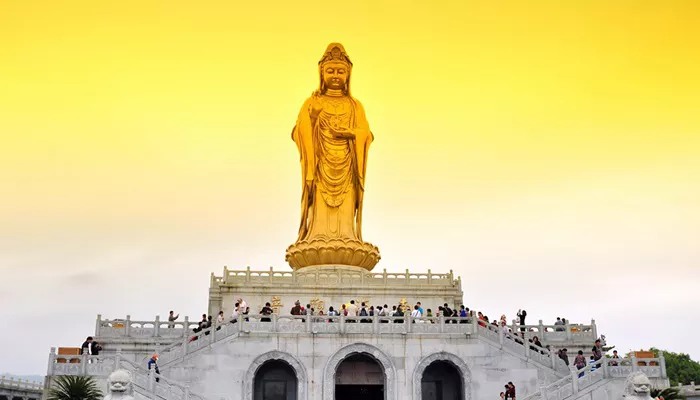Puji Temple is a well-known Buddhist temple with a rich history and deep cultural importance. It is a place where many believers come to practice Buddhism, meditate, and find peace. The temple is not only a religious site but also an important part of cultural heritage. Its architecture reflects traditional Buddhist styles, attracting visitors interested in both spirituality and art.
History of Puji Temple
The Founding of Puji Temple
Puji Temple was established many centuries ago during a time when Buddhism was spreading widely. The temple was built by devoted monks who wanted to create a peaceful place for teaching and practicing Buddhism. Over the years, Puji Temple has survived wars, natural disasters, and social changes, yet it remains a symbol of faith and perseverance.
Important Historical Events
Throughout history, Puji Temple has played an important role in local communities. It has served as a center for Buddhist learning and meditation. Many famous monks have lived and taught here, helping to spread Buddhist teachings further. The temple also witnessed cultural exchanges, influencing and being influenced by other Buddhist traditions.
Renovations and Preservation
To protect its cultural and spiritual value, Puji Temple has undergone several renovations. These efforts aimed to preserve the original style while improving the temple’s structure. Today, Puji Temple is carefully maintained to welcome both worshippers and tourists who want to learn about Buddhist culture and architecture.
Architecture of Puji Temple
Design and Structure
Puji Temple is a beautiful example of temple architecture. The layout is designed to promote harmony and spiritual focus. The main buildings include the Mahavira Hall, the Bell Tower, the Drum Tower, and various meditation rooms. Each part of the temple is carefully placed to follow traditional Buddhist principles.
Symbolism in Buddhist Architecture
The architecture of Puji Temple carries deep symbolic meaning. For example, the roofs are often curved upwards to ward off evil spirits. The use of colors like red and gold represents good fortune and enlightenment. Statues and carvings of Buddha and bodhisattvas decorate the temple, reminding visitors of Buddhist teachings and ideals.
Materials and Craftsmanship
The temple was built using local wood, stone, and tiles, combined with skilled craftsmanship passed down through generations. The detailed carvings on the wooden beams and stone statues show the artistic skill of ancient builders. This careful craftsmanship connects visitors to the spiritual and cultural past of the temple.
Cultural Significance of Puji Temple
Religious Importance
Puji Temple is a vital center for Buddhist practice. Monks and laypeople come here to chant sutras, meditate, and learn about the Dharma. The temple holds regular ceremonies that mark important dates in the Buddhist calendar, such as Vesak and Ullambana. These events help keep Buddhist traditions alive in the community.
Community Role
Besides its religious functions, Puji Temple is also a place where people gather for festivals, education, and charity. The temple supports local people by offering free meals, education about Buddhism, and helping during hard times. It strengthens community bonds and promotes values of kindness and compassion.
Tourism and Education
Puji Temple attracts many tourists and students interested in Buddhist culture and architecture. The temple offers guided tours and meditation classes, making it a learning center for people from all over the world. This helps spread awareness of Buddhist teachings and the importance of preserving cultural heritage.
Puji Temple in the Context of Famous Buddhist Temples
Comparing Puji Temple to Other Temples
Like other famous Buddhist temples, Puji Temple combines history, architecture, and culture. While each temple has its unique style, they all share common features such as the focus on meditation, teachings of the Buddha, and symbolic architecture. Puji Temple stands out for its well-preserved design and active role in the community.
Puji Temple’s Influence on Buddhist Architecture
Puji Temple reflects the core principles of buddhist architecture—balance, harmony, and spiritual symbolism. Its design has influenced nearby temples and even some modern Buddhist centers. The temple’s architecture teaches us how physical spaces can support spiritual growth and community life.
Conclusion
Puji Temple is more than just a building. It is a living place of worship, culture, and history. Its simple yet meaningful architecture connects us to the wisdom of Buddhism. As a center of faith, learning, and community support, Puji Temple continues to inspire people today. Whether you visit for spiritual practice or cultural appreciation, Puji Temple offers a unique window into the world of Buddhism.

